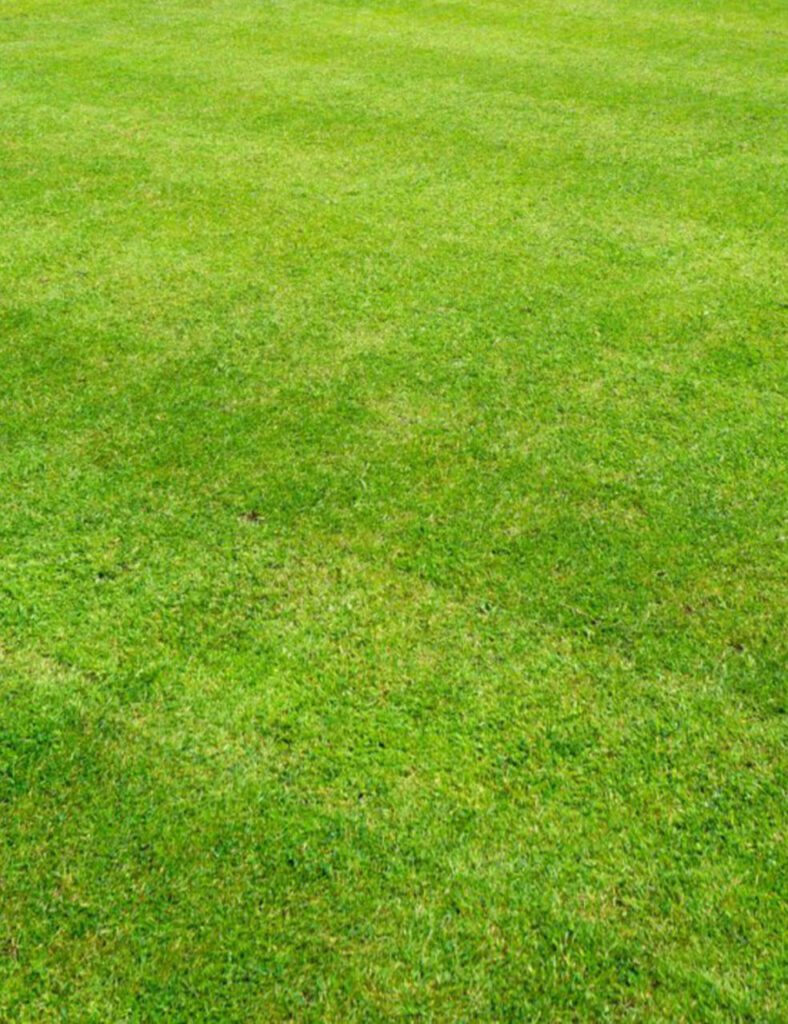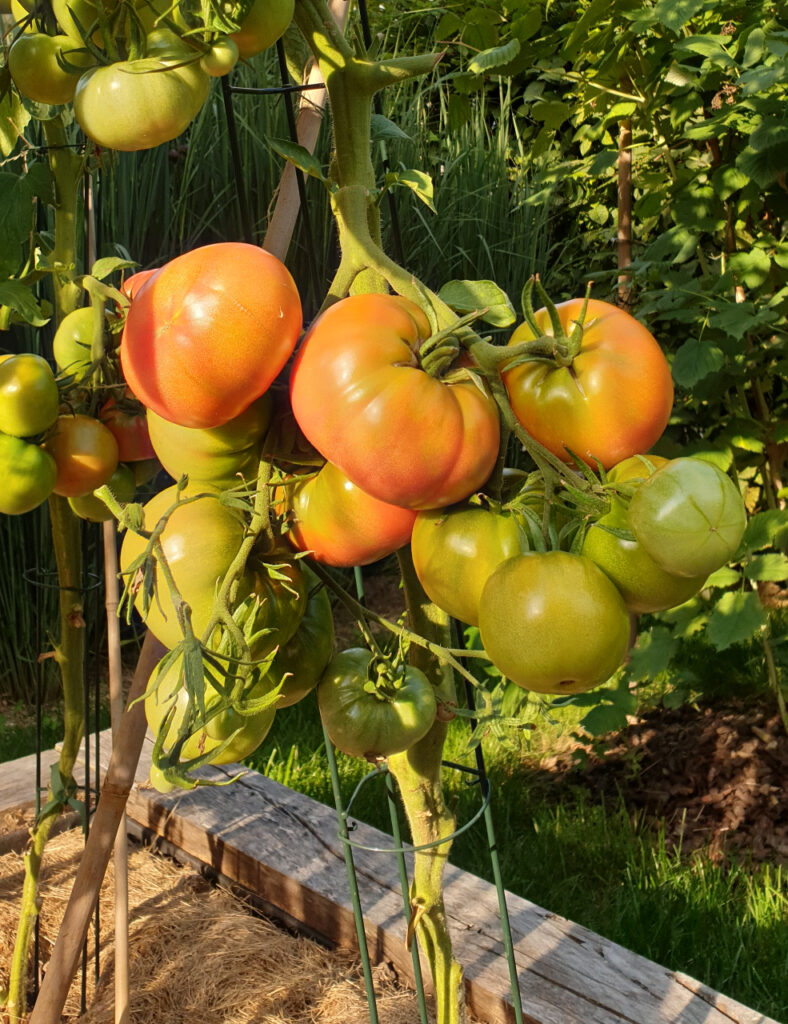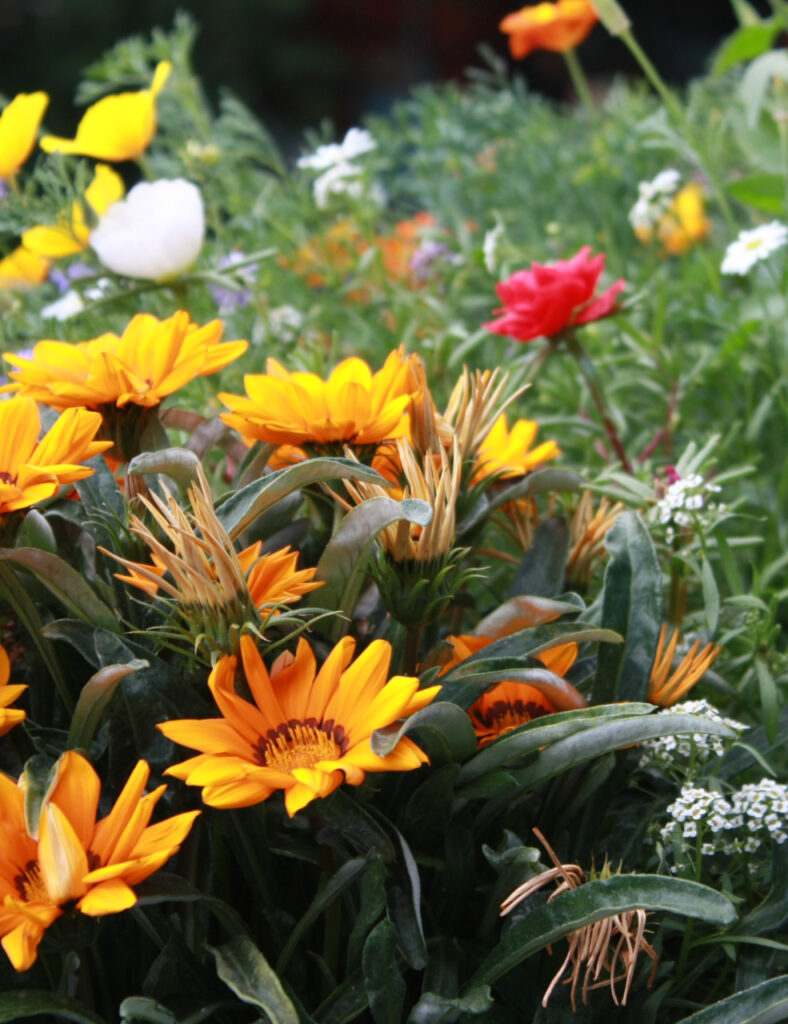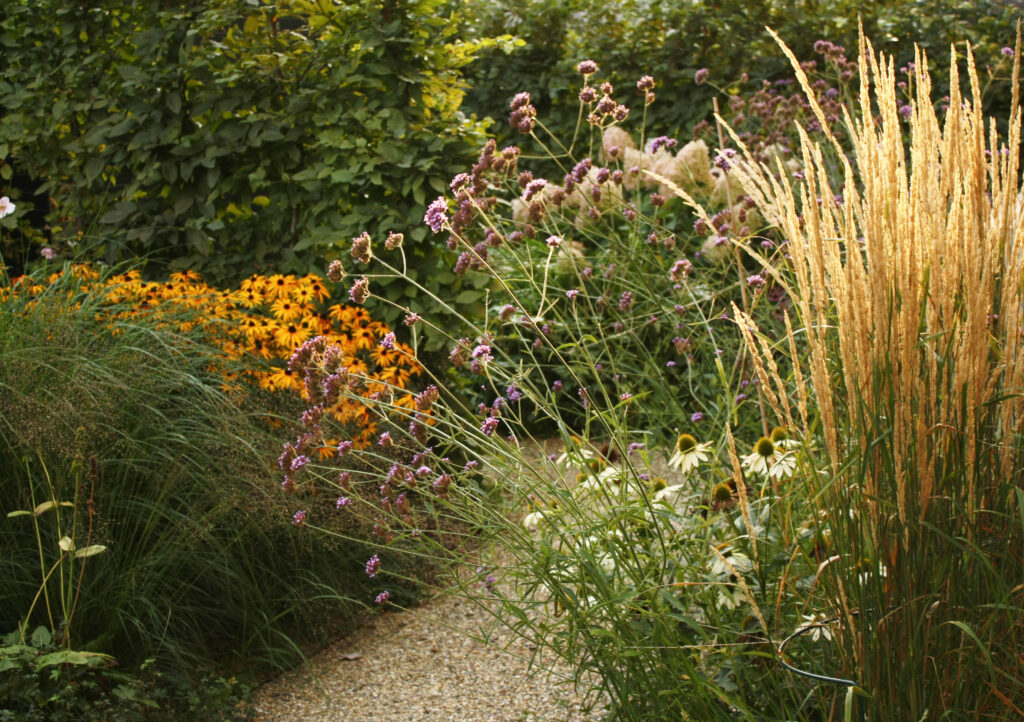Working in your garden may be a path to more joy and mental health in your life. However, if you are a working professional, or a mother to little children, or taking care of a puppy (or all of these together!), the idea of even a tiny bit more work triggers an instant protest. You are already overwhelmed! I understand, I’ve been there, too. So I want to introduce an idea that it is possible to maintain a beautiful, engaging garden without adding time-consuming burdensome work. Moreover, there is a chance to go one step further: reduce unpleasant chores. This can happen if you create a ‘right-maintenance’ garden.
Is this your garden now?
Chances are that your garden at the moment is an expanse of lawn with a few scattered shrubs, surrounded by a hedge. Perhaps you also have some pots with herbs and colourful annual flowers you’ve got at a local garden centre, or maybe even a patch of sown annuals. Finally, there are a couple of raised beds for seasonal vegetables in the corner. Sounds (and looks) like nothing, but it it doesn’t feel this way. This is because the lawn, food crops and annual flowers are the most time-, energy-, and resources-consuming features in any garden.



Lawn, vegetables, and annual flowers. Do you have any of these time-consuming features in your garden?
The myth of a low-maintenance garden
What I described above is a classical low-maintenance garden. However, let’s look at what it takes to manage it:
- You need to mow grass every week during the spring and late summer growth periods.
- You also have to water the lawn every second day in high summer. Even if you use sprinklers, you have to set them out.
- Shrubs are getting too large, so you need to chop them every season.
- Planting of flower pots and vegetables, and then clearing up everything in autumn, are a major family choreography.
- Flowers and veggies require daily watering in the summer. In addition, they ask for fertilisation, weeding and maybe pest control.
- I won’t even elaborate on hedge trimming.
All these activities can easily amount to at least 30 min every day! Furthermore, not only doing all these things is time-consuming and unpleasant, but they are something to occupy your mind as a part of a way too long to-do list.
The problem of low satisfaction
I was writing before how engagement is fundamental to living fully and connecting to nature in your garden. Yet, even if you agree with me in principle, you probably don’t find much joy in most of the above activities. Maybe with an exception of getting your own veggies. You also cannot imagine how you could add even more without sacrificing time for yourself or your family. Nonetheless, I want you to ask yourself: Is working in the garden entirely not for you, or is it simply the wrong type of work? The common denominator of tasks described above is that they are simple physical labour. Another problem is that although a substantial amount of time and energy are spent, the aesthetic outcome is far from thrilling. Ergo, the turnover on investment is low.
There is, however, another way—a right-maintenance garden.
The myth of high-maintenance flower border
In contrast, a large proportion of my ‘work’ in our richly planted garden is as simple as observation. I look around and take mental notes of what I could amend. For example, which branches of a young tree are best to be pruned for a nicer silhouette? What colour of tulips should I add next autumn? Didn’t this plant get too large for its space? And if it did, is it better to restrict it a bit or move its neighbours to another spot? At other times, maintenance is as simple as removing a few spent flower heads or pulling an unwanted seedling. And to do any of that, I don’t need to dedicate any particular time. I do those things spontaneously, while hanging in the garden to relax. The actual physical work is then a precise intervention rather than frenzy of power tools, or long hours every week.

Wrong plant in the right place
Nonetheless, a crucial part of the right-maintenance flower border is a mindful design. Traditionally, plants were combined for flower colours with disregard to their ecological provenience. Thus, it could be that a Mediterranean plant, which evolved to cope with dry, lean soil, had been placed side by side with a flower that loves heavy, rich, wet ground–just because they look nice together. Plants were chosen disregarding local conditions with the idea that the gardener’s mission is to cater to their individual needs. Indeed, this type of gardening required immense effort to keep every plant happy and regular replacement of those that didn’t cope with suboptimal conditions. Nowadays, the nurseries’ catalogues feature thousands of shrubs and perennials, and often provide suggestions for good planting partners for each species. Ergo, it is possible to choose a selection appropriate to given conditions, rather than trying to procure conditions to a wrong selection.
Unnecessary maintenance leads to more maintenance
Many traditional garden practices create more maintenance in a perpetual cycle. These are:
- too much water
- too much fertiliser
- too much chemicals
- too much soil disturbance
Ornamental plants are no cabbages nor pumpkins, so vegetable growing methods are not appropriate for them. Overwatered and over-fertilised plants grow too large and become floppy, so they need staking. Moreover, they are very delicious to pests, which are then battled with spraying. In consequence, the whole biological system is out of balance, because insecticides kill beneficial predators, too. Pest then can happily recolonise, in even larger numbers. What is more, over-fertilisation may compromise longevity of a majority of perennial plants, which usually have modest needs. Heavily “enriched” soil might become toxic to plants through nutrient imbalances, particularly due to excess of phosphorus. Finally, nutritious, constantly reworked soil is an excellent medium for weeds.
Weeding? What weeding?
On the other hand, there are necessary interventions. Above all, covering soil with organic woody mulch. For example arborist wood chips. Appropriate mulch conserves water, and supports beneficial microbial life, which in turn supports plants. Second, in our unpredictable weather patterns in central Europe, it might be necessary to water the garden every now and then during prolonged drought, and after installation. Ideally, with an economical drip irrigation, which is switched on only when the soil dries out. Another advantage of drip irrigation is that the surface of beds stays dry, because pipes are hidden under mulch. As a consequence, weeds are less likely to germinate. When perennials create dense, lush cover, weeds don’t have enough light to germinate and grow, so there is no need for weeding. Finally, fertilisers are added only if a soil test indicates clear deficits.
Growth
All told, I don’t want to fool you. The right-maintenance garden does not equal no-maintenance garden. The garden grows and changes constantly. Some plants have shorter life spans programmed in their genetic makeup. Other plants disregard theory and experience and simply don’t perform as expected in a particular spot. Others then will march through the field relentlessly, taking no prisoners. Thus, there will be necessity for replacements and mediation. At the same time, these qualities make the garden a place of exciting novelty. When a plant dies, it may be sad, but it is also an opportunity to try another from these several thousands beautiful choices. Eventually, editing or replacing individual flowers in an existing planting scheme is usually not taking much more effort than annual planting in pots.
Discomfort of uncertainty
There is a caveat, though. This style of gardening requires higher intellectual input and embracing the discomfort of uncertainty: Did I prune it right? What should I replace this shrub with? Shall I keep these plants here, or is it better to transplant them over there, or maybe remove entirely? It takes some practice to develop a playful, light manner to avoid decision fatigue. The garden is all but static–good choices and bad choices are all part of the experience and nothing is permanent. Being open to learning and experimenting is a gate to more fulfilling, forgiving relationship with the garden. And then the garden will return many beautiful moments.
I would be delighted to help you find out what the ideal right-maintenance garden would be for you, so don’t hesitate to get in touch.


